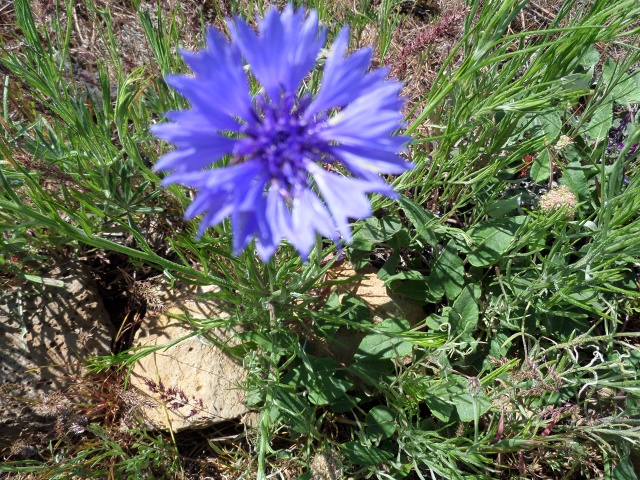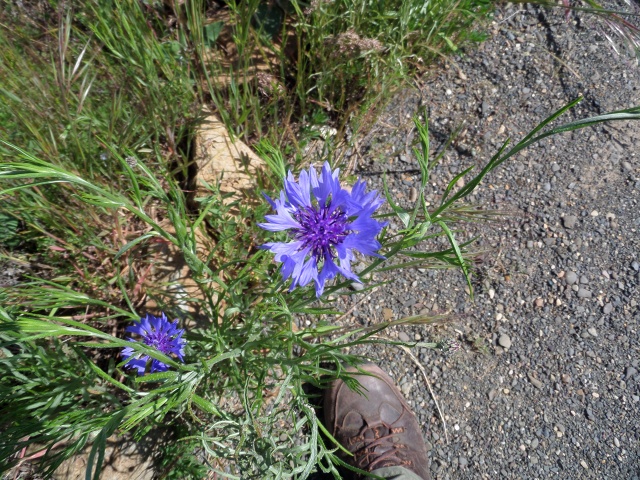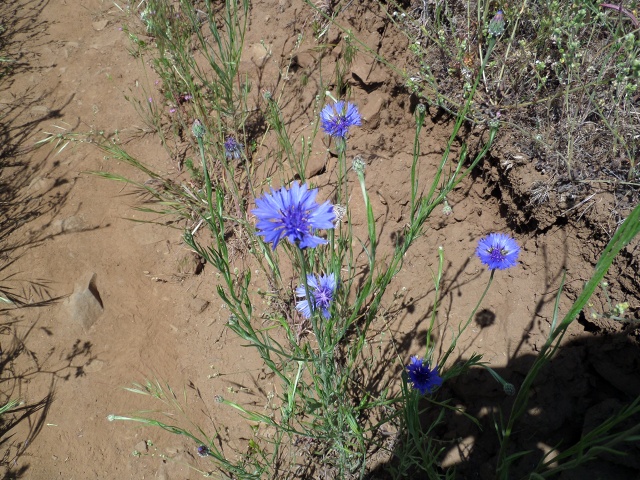Bachelor Buttons
(Centaurea cyanus)
Also known as cornflower, bluebottle, boutonniere flower, hurtsickle or cyani flower,
n folklore, cornflowers were worn by young men in love; if the flower faded too quickly,
it was taken as a sign that the man's love was not returned.
In herbalism, a decoction of cornflower is effective in treating conjunctivitis,
and as a wash for tired eyes.
The blue cornflower has been the national flower of Estonia since 1968 and symbolizes daily
bread to Estonians. It is also the symbol of the Estonian political party,
People's Union, the Finnish political party,
National Coalition Party, and the Swedish political party,
Liberal People's Party, and has since the dawn of the 20th century been a
symbol for social liberalism there.[citation needed] It is the official flower of the Swedish province of Östergötland and the school flower of Winchester College.
The blue cornflower was one of the national symbols of Germany.
This is partly due to the story that when Queen Louise of Prussia
was fleeing Berlin and pursued by Napoleon's forces, she hid her children in a field
of cornflowers and kept them quiet by weaving wreaths for them from the flowers. (from Wikipedia)


